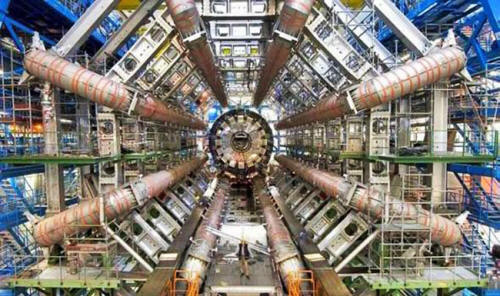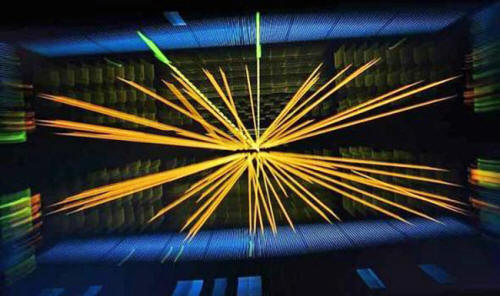|

by Paul Baldwin
October 17, 2015
from
Express Website
Spanish version

Collision
course:
Large Hadron Collider
could discover parallel universe
Scientists conducting a
Mindbending Experiment
at the Large Hadron Collider
next Week
hope to Connect with a Parallel
Universe
outside of our Own.
The staggeringly
complex LHC 'atom smasher' at the
CERN centre in Geneva, Switzerland, will be fired up to its highest
energy levels ever in a bid to detect - or even create - miniature
black holes.
If successful a completely new universe will be revealed - rewriting
not only the physics books but the philosophy books too. It is even
possible that gravity from our own universe may 'leak' into this
parallel universe, scientists at the LHC say.
The experiment is sure to inflame alarmist critics of the LHC, many
of whom initially warned the high energy particle collider would
spell the end of our universe with the creation a black hole of its
own.
But so far Geneva remains intact and comfortably outside the event
horizon.
Indeed the LHC has been spectacularly successful. First scientists
proved the existence of the
elusive Higgs Boson 'God particle'
- a key building block of the universe - and it is seemingly well on
the way to nailing 'dark
matter' - a previously undetectable theoretical
possibility that is now thought to make up the majority of matter in
the universe.
But next week's experiment is considered to be a game changer.
Mir Faizal, one of the three-strong team of physicists behind
the experiment, said:
"Just as many parallel sheets of
paper, which are two dimensional objects [breadth and length]
can exist in a third dimension [height], parallel universes can
also exist in higher dimensions.
We predict that gravity can leak into extra dimensions, and if
it does, then miniature black holes can be produced at the LHC.
Normally, when people think of
the multiverse, they think of
the many-worlds interpretation of quantum mechanics, where every
possibility is actualized.
This cannot be tested and so it is philosophy and not science.
This is not what we mean by parallel universes.
What we mean is real universes in
extra dimensions.

Atom art:
An image of two
protons
smashed together at
the LHC
As gravity can flow out of our
universe into the extra dimensions, such a model can be tested
by the detection of mini black holes at the LHC. We have
calculated the energy at which we expect to detect these mini
black holes in 'gravity's rainbow' [a new scientific theory].
If we do detect mini black holes at this energy, then we will
know that both gravity's rainbow and extra dimensions are
correct."
When the LHC is fired up the energy is
measured in Tera
electronvolts - a TeV is
1,000,000,000,000, or one trillion, electron Volts. So far, the LHC
has searched for mini black holes at energy levels below 5.3 TeV.
But the latest study says this is too low.
Instead, the model predicts that black holes may form at energy
levels of at least 9.5 TeV in six dimensions and 11.9 TeV in 10
dimensions.
|



